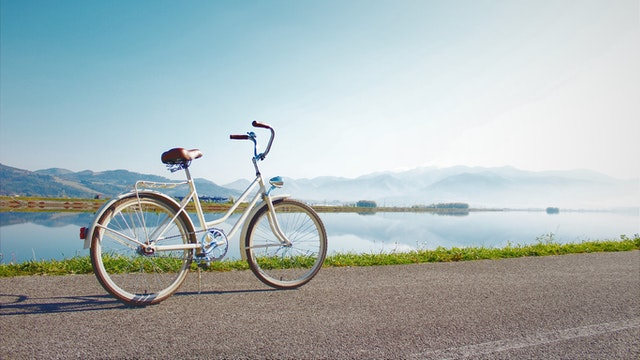
Learning to ride a bike is one of those ‘rites of passage’ that many people go through when they’re just a child. It’s a key skill, and it’s one that never fades away with time, allowing us to enjoy cycling and riding with our friends and families over and over again as we grow older.
There’s something truly special about the experience of riding a bike. Perhaps it’s the sense of propelling yourself forward using nothing but your own physical effort, or maybe it’s the feeling of the sun on your face and the wind in your hair as you ride along, taking in the sights, sounds, and smells around you.
Whatever the reason, with almost 50 million regular cyclists, it’s clear to see that cycling’s unique sensations offer a lot of joy to a lot of people, and folks of all ages set out on their bikes each and every day. Some do it for sport, others for travel, others as a way to connect with nature and experience the wonders of the world around them.
If you’re one of the many cycling enthusiasts, it’s important to understand the risks and dangers you can face when setting off on your adventures. While cycling can be a lot of fun, it still leads to hundreds of thousands of injuries each year, so here are some smart safety tips to help you get the most from your rides without any injuries or accidents along the way.
Wear A Helmet
One of the first tips to take into consideration when it comes to staying safe on a bike is to make sure you wear a helmet. While this isn’t always a legal obligation, experts all over the world always recommend wearing helmets to reduce the risks of injury.
Many studies have shown that wearing helmets can reduce your risk of injuries to the head, skull, brain, and face, but it’s important to make sure you wear a properly-fitting helmet that has no prior damage, rather than a hand-me-down from someone you know.
Additional Protection
Along with a helmet, there are many other items of protective gear you might consider wearing when you set off on a long bike ride or cycling adventure with your friends and fellow riders.
For example, it’s quite common for cyclists to wear gloves. These will help to prevent the skin on your hands from getting irritated due to gripping the handlebars all day, as well as helping to prevent cuts and scrapes if you fall. Sunglasses, visors, pads, and other accessories may be used too.
Dress Correctly
Finishing off our section on attire and accessories, it’s also important to ensure that as well as a helmet and pads, you also make sure to wear smart, sensible, comfortable clothing for any bike rides you plan to take.
Since cycling is quite an intense form of physical activity, many experienced riders recommend moisture-wicking clothing that can absorb excess heat and sweat to keep you comfortable, as well as correct footwear that lets you grip the pedals with ease.
Look After Your Bike
Your bike might look nice and shiny when you first purchase it, but the simple truth is that it will wear down over time. Parts may start to rust and corrode, and components that once moved smoothly might start to grind a little.
This is why it’s vital for every bike owner to properly look after their bicycle. Regular bike maintenance can massively extend the lifespan of your bike, as well as making it much safer to ride, so be sure to always check tire pressure, chains, brakes, and so on.
Watch the Weather
The weather can affect all of us as we try to make our way around from place to place. It can make journeys treacherous, even in a car, so trying to cycle during storms, heavy rain, or icy conditions can be a very dangerous thing to do.
Keep an eye on the weather forecast if you’re someone who likes to cycle, and try to schedule your bike rides for the drier, sunnier, and calmer days in general.
Don’t Push Yourself
Cycling is a wonderful way to keep in shape. It’s a highly effective form of cardio exercise, helping people burn off excess calories, tone their muscles, improve their endurance levels, and much more.
However, it’s important to be able to recognize the limits of your own body while cycling and not push yourself too far. Some cyclists make the mistake of riding for too long and then suffer aches, pains, and strains as a consequence.
Use Hand Signals
An essential skill for every cyclist to learn is knowing how and when to use hand signals. These signals, which essentially involve holding out hands and arms in different directions, can be used to indicate to other road users when you’re about to turn.
They’re basically just like signal lights, but without the lights, and they can be highly effective when you’re riding on the roads and need to inform drivers of your actions and intentions so they don’t drive right into you.
Avoid Distractions
Distractions are more prevalent now than ever before, thanks to modern gadgets like smartphones, and it’s so easier for cyclists to take their attention away from the road in order to check their phone or take a swig of water from their bottle or chat with a fellow rider.
These momentary lapses in concentration can be fatal, with hundreds of cyclists killed every single year, so it’s always recommended to stay focused on the task at hand and keep your eyes firmly on the road ahead, rather than letting yourself get distracted.












